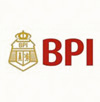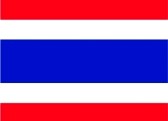All Categories
The Public Health Consequences of Disasters
Share Tweet
*Price and Stocks may change without prior notice
*Packaging of actual item may differ from photo shown
- Electrical items MAY be 110 volts.
- 7 Day Return Policy
- All products are genuine and original








About The Public Health Consequences Of Disasters
Product Description Natural and man-made disasters--earthquakes, floods, volcanic eruptions, industrial crises, and many others--have claimed more than 3 million lives during the past 20 years, adversely affected the lives of at least 800 million people, and caused more than 50 billion dollars in property damages. A major disaster occurs almost daily in some part of the world. Increasing population densities in flood plains, along vulnerable coastal areas, and near dangerous faults in the earth's crust, as well as the rapid industrialization of developing economies are factors likely to make the threat posed by natural disasters much bigger in the future. Illustrated with examples from recent research in the field, this book summarizes the most pertinent and useful information about the public health impact of natural and man-made disasters. It is divided into four sections dealing with general concerns, geophysical events, weather-related problems, and human-generated disasters. The author starts with a comprehensive discussion of the concepts and role of surveillance and epidemiology, highlighting general environmental health concerns, such as sanitation, water, shelter, and sewage. The other chapters, based on a variety of experiences and literature drawn from both developing and industrialized countries, cover discrete types of natural and technological hazards, addressing their history, origin, nature, observation, and control. Throughout the book the focus is on the level of epidemiologic knowledge on each aspect of natural and man-made disasters. Exposure-, disease-, and health-event surveillance are stressed because of the importance of objective data to disaster epidemiology. In addition, Noji pays particular attention to prevention and control measures, and provides practical recommendations in areas in which the public health practitioner needs more useful information. He advocates stronger epidemiologic awareness as the basis for better understanding and control of disasters. A comprehensive theoretical and practical treatment of the subject, The Public Health Consequences of Disasters is an invaluable tool for epidemiologists, disaster relief specialists, and physicians who treat disaster victims. Review "The disaster information provided in this text is broad-based, comprehensive, and current, but equally important is the presentation format. In only 440 pages of text, Noji et al. have reviewed the significant elements of disaster-related issues, provided a behavioral profile on each, listed pro-active prevention and control measures, and, based on specific disaster knowledge gaps, enumerated detailed research recommendations. In my opinion, this book would become a well-worn volume in the library of all those involved in disaster work."―International Journal of Mass Emergencies and Disasters "The Public Health Consequences of Disasters is a significant update to the 1989 monograph by the Centers for Disease Control and Prevention (CDC)....An outstanding desk reference...It is a fascinating book, which will serve as an authoritative source of information for many years to come."―Journal of the American Medical Association "One needs only read the first chapter of The Public Health Consequences of Disasters to understand how devastating disasters can really be...a reality check that is long overdue.... A much-needed catalogue of areas that require further investigation...outstanding job....The text is easy reading and seeks to present not only useful public-health issues, but also an overview of general disaster management, so that the reader has an understanding of the critical link between these two areas. Noji has magnificently compiled a most useful text that should be required reading for students of public-health and emergency and disaster managers alike."―Lancet "Presents succinctly the public health impact of all major disasters...The editor and the authors of the book are experienced experts in




 (3)
(3)






















